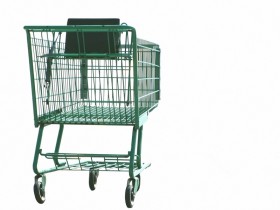VCLEVER BLOG

Time and time again, I come across sites that are well thought out and well designed – that is, until you click the ‘buy’ button.
Southern Rail is a perfect case in point. They’ve clearly blown a fair amount of cash on marketing recently and the website seems to have got the full treatment.
The booking system is slick (especially given the complexity of fares and timetables it has to deal with) and everything is presented pretty cleanly and simply.
But hit the ‘buy now’ button and all of their thought processes seem to fly straight out the window.
From the home page, it only takes 5 clicks across 2 pages to get you into the checkout process. That’s very impressive. But from then on, Southern do everything they can to stop you buying a ticket – you are confronted with an inputting obstacle course:
1) a whole screen loads just to ask if you want to add a bus ticket
2) Another whole screen to ask how you’ll collect the ticket
3) Another whole screen to ask if you want to save this journey for another occasion
4) You finally make it to a screen where you enter your details. Now as a new user, all the questions are quite quick and reasonable. However, as a registered user (you can sign in for this bit) you then expect that all your details will be filled in automatically, but incredibly, you still have to go through a postcode finder to enter your address and then you need to click ‘use saved card’ to pull up the option to use a card that you’ve already registered. You then have to choose that card and enter the security code and tick ‘agree to T&Cs’ and then finally, finally, you can click the real ‘buy now’ button.
Southern, if you’re reading this, please streamline this ridiculous process. If I were in a supermarket, I would have thrown all my groceries on the floor in frustration with the cashier. As it is, I’ve done the digital equivalent (i.e. given up) a couple of times and now never buy tickets online from Southern anymore because sadly, it is quicker to buy them at the station. That says it all really! And the solution is so simple: the checkout process should be on one page only. And if you are already registered, that page should have all your details there already (having to enter your address or a card security number again is unforgivable).
So how on earth can companies get it so wrong? Look around on the internet and as a generality, sites are becoming easier to navigate and more focused on guiding their users through to desirable outcomes. But too often, the checkout process falls down, following completely different principles from the rest of the site. Why?
1) The wrong measure of success. Clicking the ‘buy’ button may be a measurable ‘desired action’, but on its own, it is not a measure of success. Of course, there will be a discrepancy between the numbers who click ‘buy’ and actual sales, but don’t just assume this is natural wastage – measure the difference and look how the process can be streamlined. Too many companies put all their efforts into getting their users to complete a ‘desired action’ when the true desired action is actually a few steps further down the line and has been completely overlooked.
2) ‘Not my problem!’ What I mean by this is that the checkout or payment process may be driven by another site or a separate process (in other words, it’s tacked on). This can lead to designers saying that it’s out of their control or marketers assuming that there’s nothing that can be done to improve it. Here’s a simple rule: if you can’t integrate and customise a payment system to your liking, find a better one.
There’s a simple lesson here. See your user experience all the way through. You can have the slickest site in the world that performs brilliantly in pointing your users to measurable goals, but if those goals are in the wrong place or there are subsequent links in the chain that you’ve neglected, all that planning, effort and investment can go entirely to waste.
